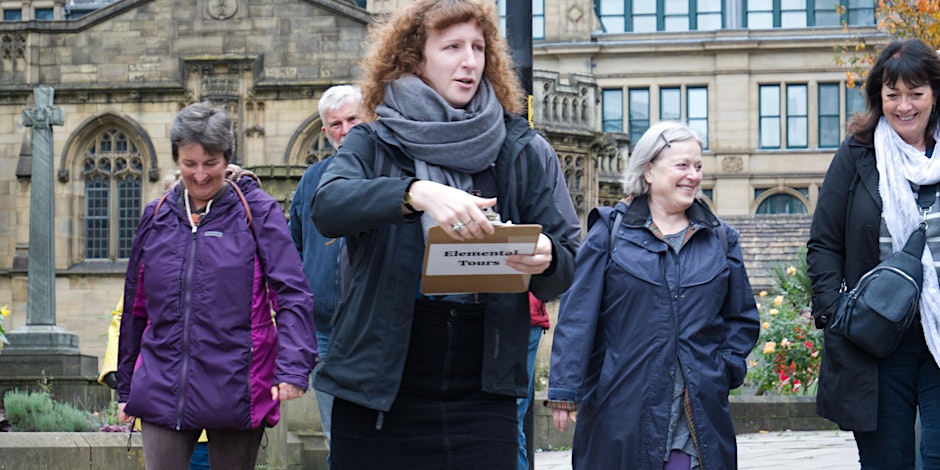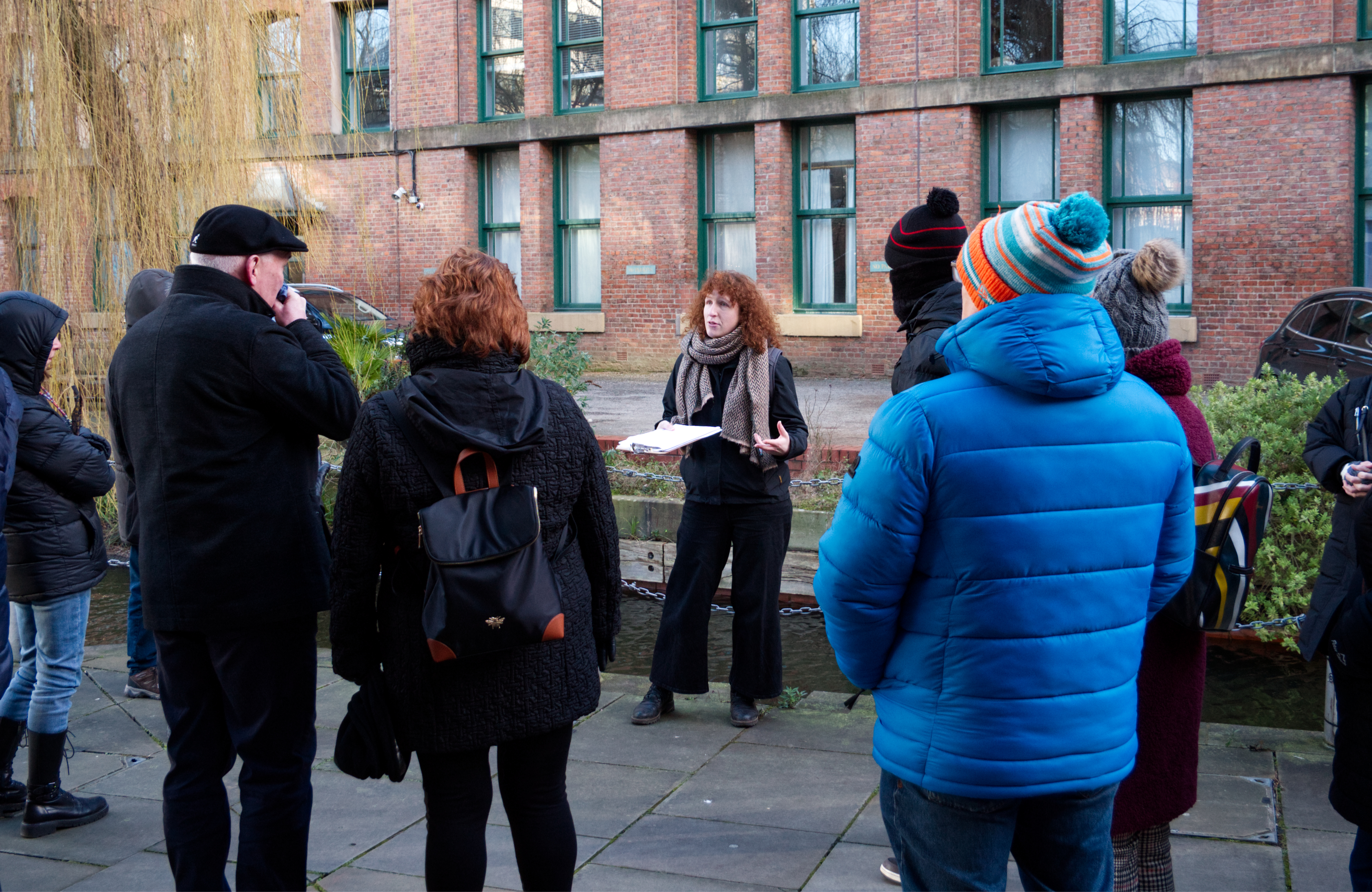


Red sandstone is Manchester’s native rock, but many of our buildings are clad in Portland Stone all the way from the South Coast- why? Join us to get the solid facts on why humans are so obsessed with stone and what stone represents. We’ll meet at Manchester Cathedral and walk to The Bridgewater Hall. On the way we’ll chat about fossils, erosion and stone as a status symbol. We’ll talk about how Manchester has grabbed building materials from outside its boundaries, extending its reach across the world, and the environmental impact of quarrying. And after all this effort, is stone really as permanent as we think?
Price
£13.70
Free for children under 12
Upcoming tour dates
Sunday 29 September 2024: 1-3pm
If you would like to be notified when other tour dates are available, please join our newsletter below:
Where does Manchester get its water from? How has the city used water over the centuries? And how has water shaped the Manchester we know now? Join us and get to know Manchester’s water on a deeper level. We’ll meet in front of the Museum of Science and Industry and walk to Canal Street. On the way we’ll talk hard water, soft water, floods, and mud. We’ll chat about canal building, how to reshape a river, the horrors of cholera and mythical water monsters. We’ll even meet a hidden river running out of sight beneath the city streets.
Price
£13.70
Free for children under 12
-
Upcoming tour dates
-
If you would like to be notified when other tour dates are available, please join our newsletter below:
Charlotte Coull is a historian fascinated by the way people have interacted with, and still interact with, elements and materials like stone. Her PhD is in the history of British archaeology but she feels equally at home talking about the environmental history of our urban surroundings. She is passionate about public history and is building up a fledgling YouTube channel: https://www.youtube.com/@appliedhistorian . Ask her what her next video will be about. (But not when it will be finished. History takes time.)
Erica Mukherjee studies the history of mud and water in the British Empire. She is interested in the ways that 18th and 19th century engineers tried to tame watery landscapes–and how they often failed in the face of cyclones and floods (Be sure to ask her about what happened in 1872 when the River Medlock burst its banks next to Philips Park cemetery). A clinical assistant professor of history at New York University-Shanghai, Erica has also been a walking tour guide with Big Onion Tours in New York City for ten years.
Elemental Tours is a new way of looking at the city. We encourage our audience to think beyond the human and to engage with the material environment of Manchester. We draw attention to its water, its air, its stone and its fire and how these things have shaped the city and the humans that live in it. We also explore how humans have tried, and sometimes failed, to control these things.
We’ll talk flooding, quarrying, silt, disease, smoke and much more as we weave through the city streets. We’ll connect the natural world with the urban environment and discuss how these two ideas are not as dissimilar as they might first seem.
Every city has a unique relationship with its surroundings and Manchester is no exception. The city’s damp climate boosted its cotton industry, red sandstone gave the city its earliest building materials, and the surrounding countryside provided coal as well as space for reservoirs to serve the city’s growing population.
Manchester’s impact spreads beyond the tarmac and paving of its city centre or even its suburbs. Urban growth has pulled resources from far afield as the city has shaped the land to suit its needs.
But the city is so much more than a manmade stamp on the landscape. Natural forces still interfere and intervene to shape the urban environment. Recently there has been a push to recognise this and explore how the city can integrate more fully back into the natural world.
Right now, it is more important than ever to understand how humans interact with our environment. We need to understand how we shape the natural world, but also how the natural world shapes us. We now recognise that we are in the Anthropocene, a period of geological time in which human influence is seen above all else. There will be further significant environmental upheaval if we do not learn to respond to our world with care and consideration.
Environmental history gives us the context for our present-day problems and allows us to look for solutions back along the paths of how we got to our present moment. It reminds us that although humanity may be a defining force in the path of this planet, nature needs to be taken seriously if we are to survive.